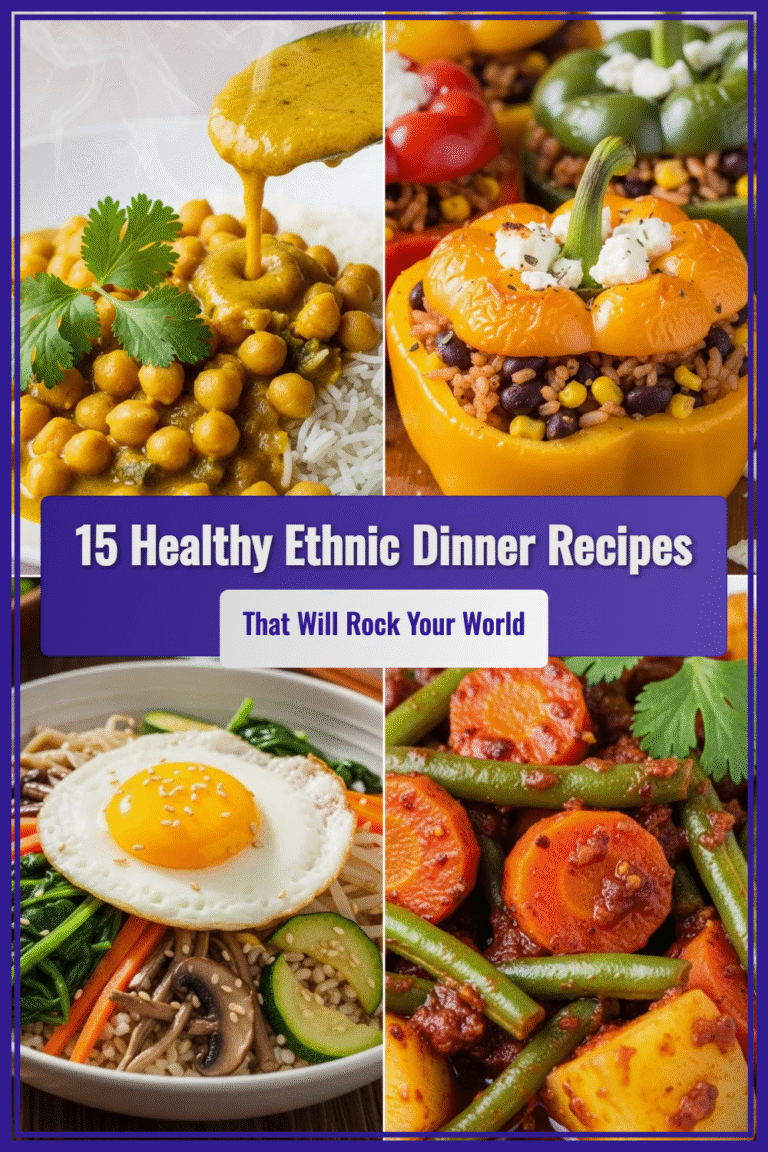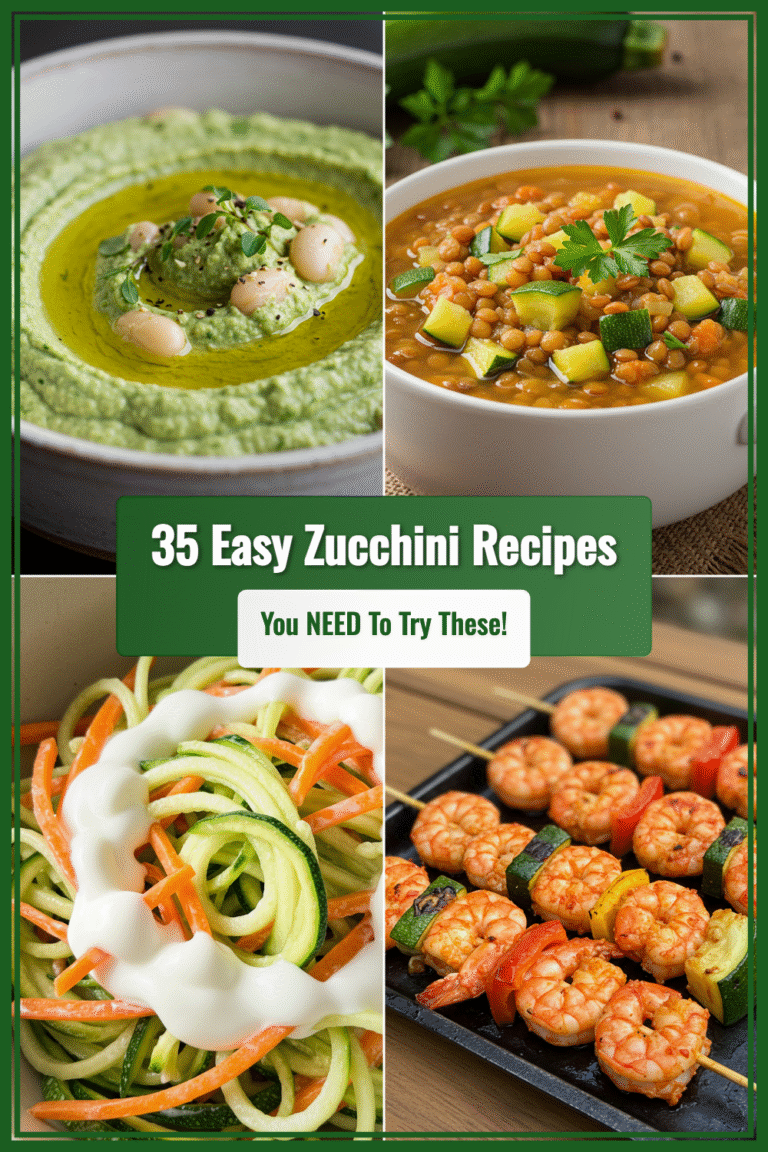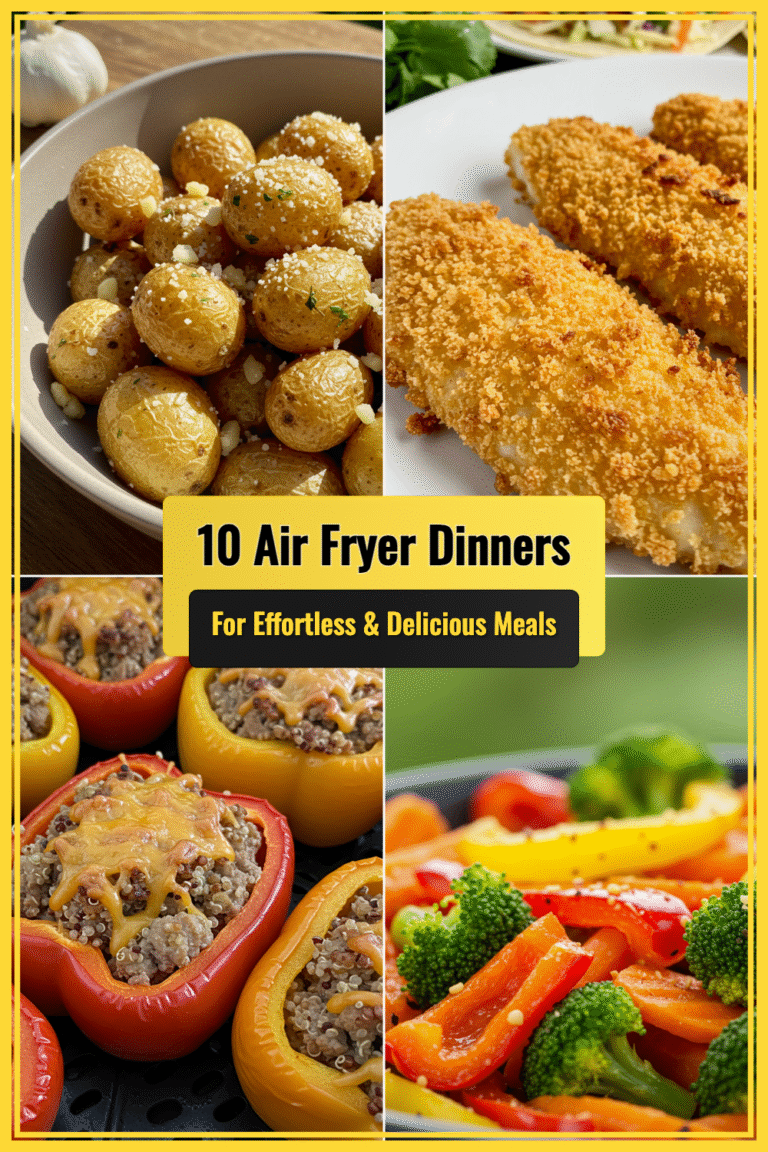7 Perfect Oven Steak Recipes for Restaurant-Quality Results
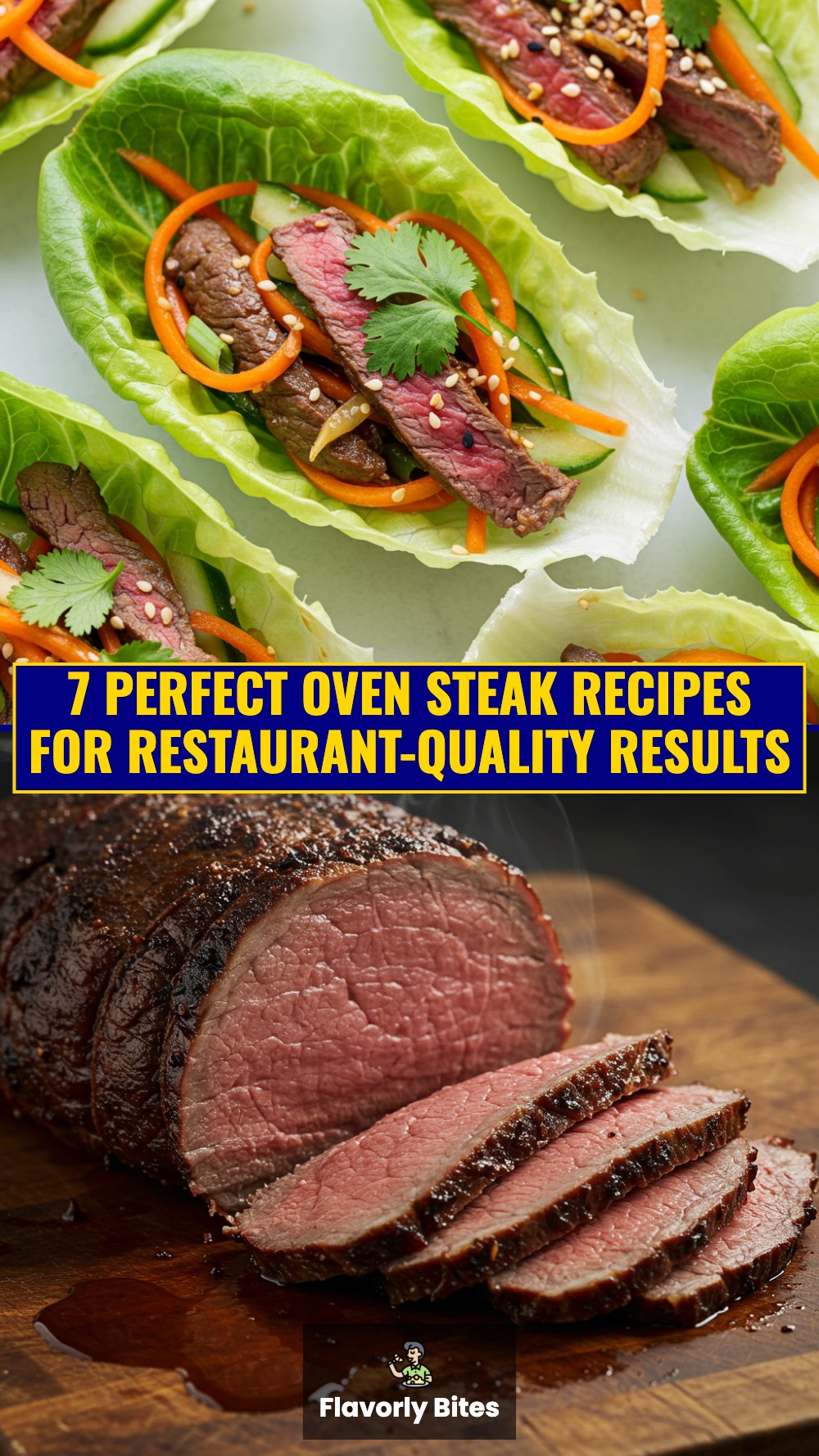
Getting that perfect steak from your oven might seem impossible, but it’s actually easier than you think. Whether you’re dealing with a thick ribeye or a lean sirloin, these oven steak recipes will help you achieve that coveted restaurant-quality crust and juicy interior every single time.
The Science Behind Perfect Oven Steaks
According to the Journal of Food Science, the key to perfect steak lies in understanding the Maillard reaction – the chemical process that creates that beautiful brown crust we all crave. “The optimal temperature for developing maximum flavor compounds while maintaining moisture is achieved through controlled high-heat searing followed by moderate oven finishing,” notes Dr. Harold McGee, food science expert and author of On Food and Cooking.
| Steak Cut | Thickness | Sear Time | Oven Temp | Internal Temp (Medium-Rare) |
|---|---|---|---|---|
| Ribeye | 1-1.5 inches | 3-4 min/side | 400°F | 130-135°F |
| Strip | 1-1.5 inches | 3-4 min/side | 425°F | 130-135°F |
| Filet Mignon | 1.5-2 inches | 2-3 min/side | 400°F | 130-135°F |
| Sirloin | 1 inch | 4-5 min/side | 450°F | 130-135°F |
Essential Equipment and Preparation
Before we dive into the recipes, let’s talk about what you’ll need for success. A good oven-safe skillet is absolutely crucial – cast iron works best, but stainless steel will do the trick too. You’ll also want a reliable meat thermometer because guessing isn’t going to cut it here.
Pro-Tip: Take your steaks out of the fridge 30-45 minutes before cooking. Room temperature meat cooks more evenly and won’t shock your hot pan.
The preparation process is just as important as the cooking itself. Pat your steaks completely dry with paper towels – any moisture will prevent that gorgeous sear we’re after. Season generously with salt and pepper, and don’t be shy about it. The salt helps draw out moisture initially, then gets reabsorbed along with the seasoning.
1: Classic Garlic Herb Ribeye
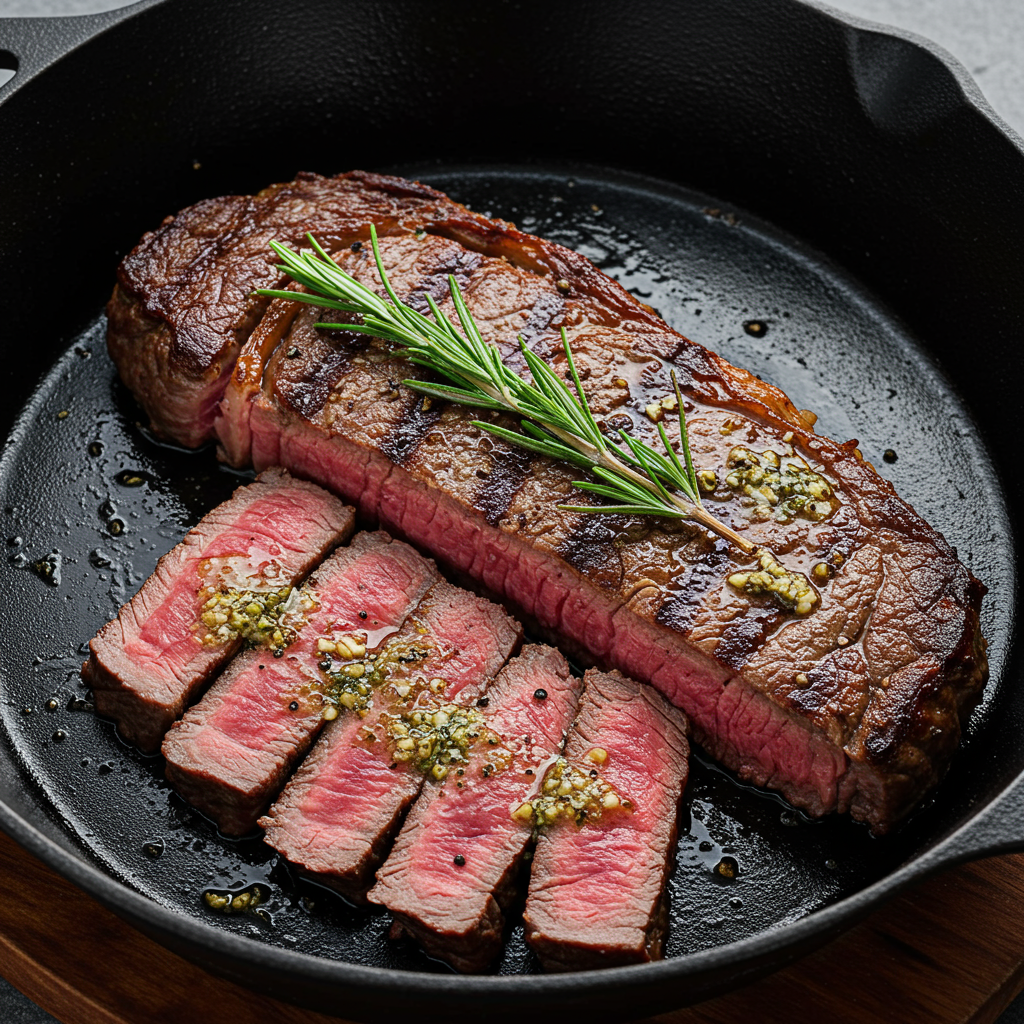
This recipe showcases the ribeye’s natural marbling and rich flavor with simple but effective seasonings.
Ingredients:
- 2 ribeye steaks (1-1.5 inches thick)
- 2 tablespoons olive oil
- 4 cloves garlic, minced
- 2 tablespoons fresh rosemary, chopped
- 2 tablespoons fresh thyme, chopped
- Salt and black pepper to taste
- 2 tablespoons butter
Instructions:
- Preheat your oven to 400°F. This temperature gives us the perfect balance of heat for finishing without overcooking.
- Season the steaks generously with salt, pepper, and half the herbs. Let them sit at room temperature for 30 minutes.
- Heat olive oil in a cast iron skillet over medium-high heat until it shimmers but doesn’t smoke.
- Sear the steaks for 3-4 minutes per side until you get a beautiful golden-brown crust. Don’t move them around – let them do their thing.
- Add garlic, remaining herbs, and butter to the pan. Tilt the pan and baste the steaks with the aromatic butter mixture.
- Transfer to the oven and cook for 4-6 minutes for medium-rare, or until internal temperature reaches 130-135°F.
- Rest for 5 minutes before serving. This step is non-negotiable – it allows the juices to redistribute throughout the meat.
Pro-Tip: Save that herb butter from the pan! It makes an incredible sauce when you add a squeeze of lemon juice.
2: Cajun-Spiced Strip Steak
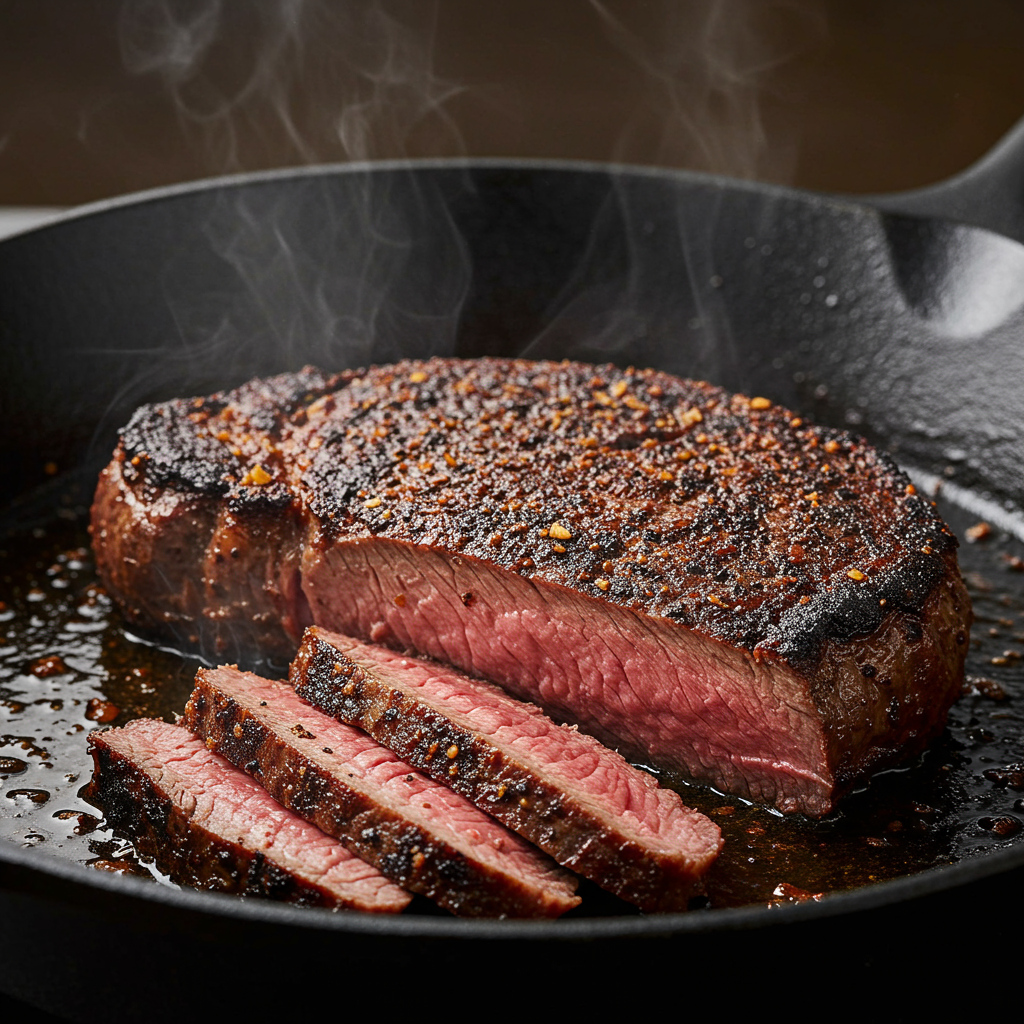
This recipe brings some heat and bold flavors to your dinner table with a homemade Cajun seasoning blend.
Ingredients:
- 2 New York strip steaks (1 inch thick)
- 2 teaspoons paprika
- 1 teaspoon garlic powder
- 1 teaspoon onion powder
- 1 teaspoon oregano
- 1 teaspoon thyme
- 1/2 teaspoon cayenne pepper
- 1/2 teaspoon black pepper
- 1 teaspoon salt
- 2 tablespoons vegetable oil
Instructions:
- Combine all spices in a small bowl to create your Cajun seasoning blend.
- Rub the seasoning all over both sides of the steaks, pressing gently to help it adhere.
- Preheat oven to 425°F and heat oil in an oven-safe skillet over medium-high heat.
- Sear steaks for 3-4 minutes per side until you see a nice spiced crust forming.
- Move to the oven and cook for 3-5 minutes for medium-rare doneness.
- Check internal temperature with a meat thermometer – you’re looking for 130-135°F.
- Let rest for 5 minutes before slicing.
The beauty of this recipe is how the spices create an incredible crust that seals in all the natural juices. The heat level is just right – enough to wake up your taste buds without overwhelming the beef’s flavor.
3: Mediterranean Sirloin with Herbs
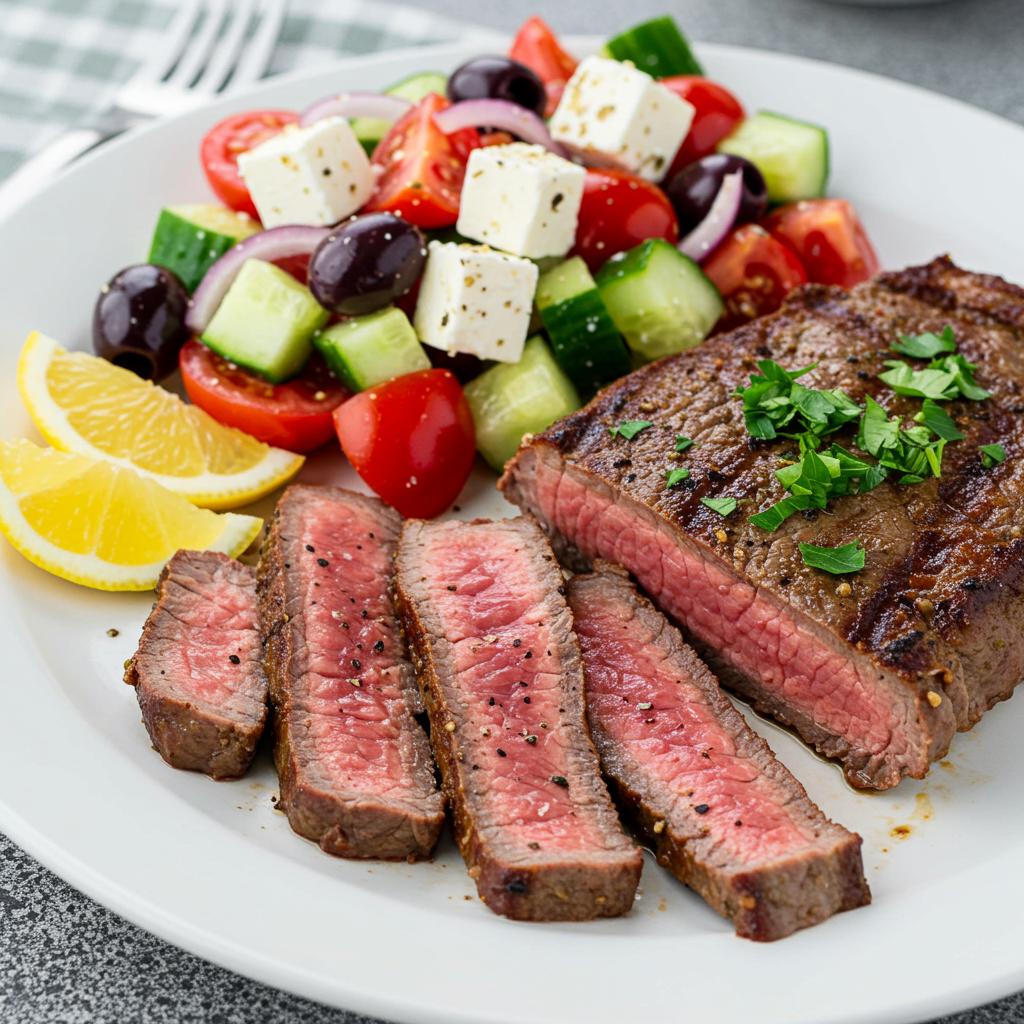
This lighter approach works beautifully with sirloin, complementing its leaner profile with bright Mediterranean flavors.
Ingredients:
- 2 sirloin steaks (1 inch thick)
- 3 tablespoons olive oil
- 2 tablespoons lemon juice
- 2 teaspoons dried oregano
- 1 teaspoon dried basil
- 1/2 teaspoon garlic powder
- Salt and pepper to taste
- 2 tablespoons fresh parsley, chopped
Instructions:
- Create a marinade by whisking together olive oil, lemon juice, oregano, basil, and garlic powder.
- Marinate the steaks for at least 30 minutes, or up to 2 hours in the refrigerator.
- Remove from marinade and season with salt and pepper.
- Preheat oven to 450°F and heat a skillet over medium-high heat.
- Sear steaks for 4-5 minutes per side until well-browned.
- Transfer to oven and cook for 2-4 minutes for medium-rare.
- Rest and garnish with fresh parsley before serving.
Pro-Tip: Save some of the marinade before adding the raw meat, and use it as a finishing sauce after cooking.
4: Coffee-Crusted Filet Mignon
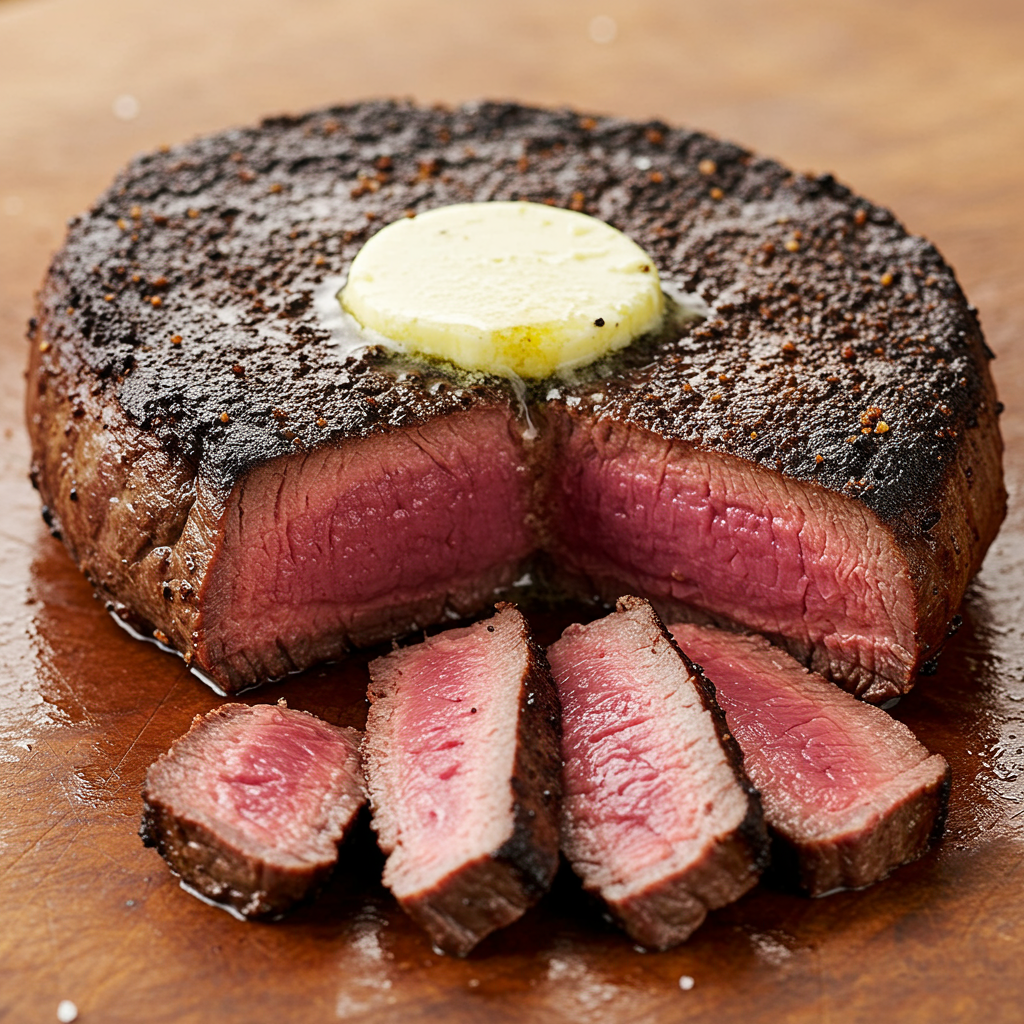
This sophisticated recipe uses finely ground coffee to create an unexpected but delicious crust on tender filet mignon.
Ingredients:
- 2 filet mignon steaks (1.5-2 inches thick)
- 2 tablespoons finely ground coffee
- 1 tablespoon brown sugar
- 1 teaspoon smoked paprika
- 1 teaspoon salt
- 1/2 teaspoon black pepper
- 2 tablespoons olive oil
- 2 tablespoons butter
Instructions:
- Mix coffee, brown sugar, paprika, salt, and pepper in a shallow dish.
- Press the coffee mixture onto both sides of the steaks, creating an even coating.
- Let steaks sit at room temperature for 30 minutes to allow the rub to penetrate.
- Preheat oven to 400°F and heat olive oil in a cast iron skillet.
- Sear steaks for 2-3 minutes per side – the coffee will create a beautiful dark crust.
- Add butter to the pan and baste the steaks as it melts.
- Finish in the oven for 4-7 minutes depending on desired doneness.
The coffee doesn’t make the steak taste like your morning cup of joe – instead, it adds a rich, earthy depth that pairs beautifully with the beef’s natural flavors.
5: Balsamic Glazed Ribeye
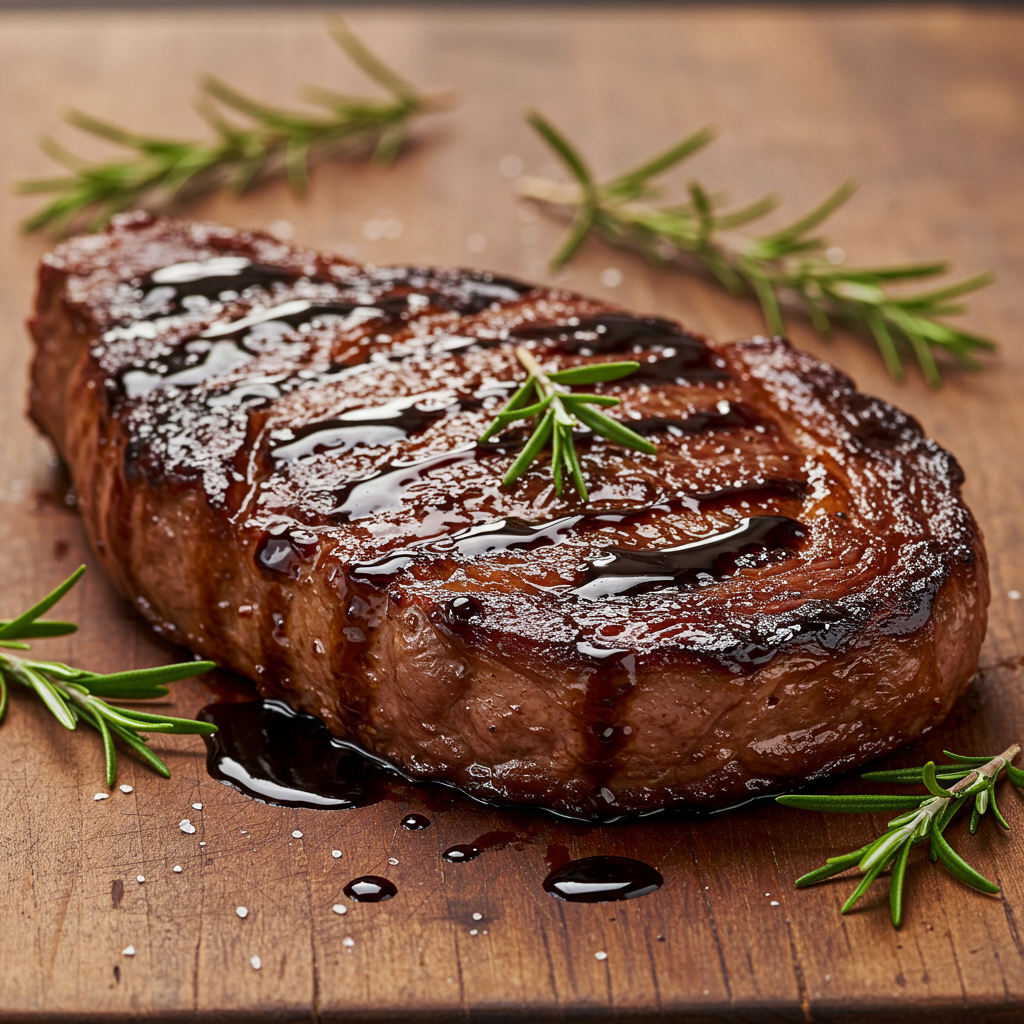
This recipe elevates the classic ribeye with a sweet and tangy balsamic reduction that caramelizes beautifully in the oven.
Ingredients:
- 2 ribeye steaks (1.5 inches thick)
- 1/4 cup balsamic vinegar
- 2 tablespoons honey
- 2 cloves garlic, minced
- 1 tablespoon fresh rosemary, chopped
- Salt and pepper to taste
- 2 tablespoons olive oil
Instructions:
- Reduce balsamic vinegar with honey in a small saucepan until it coats the back of a spoon.
- Season steaks with salt, pepper, and rosemary.
- Heat olive oil in an oven-safe skillet over medium-high heat.
- Sear steaks for 3-4 minutes per side.
- Brush with balsamic glaze and add garlic to the pan.
- Transfer to 400°F oven and cook for 4-6 minutes.
- Brush with remaining glaze before serving.
Pro-Tip: Make extra balsamic reduction – it keeps well in the fridge and works great on other proteins too.
6: Herb-Crusted Top Sirloin
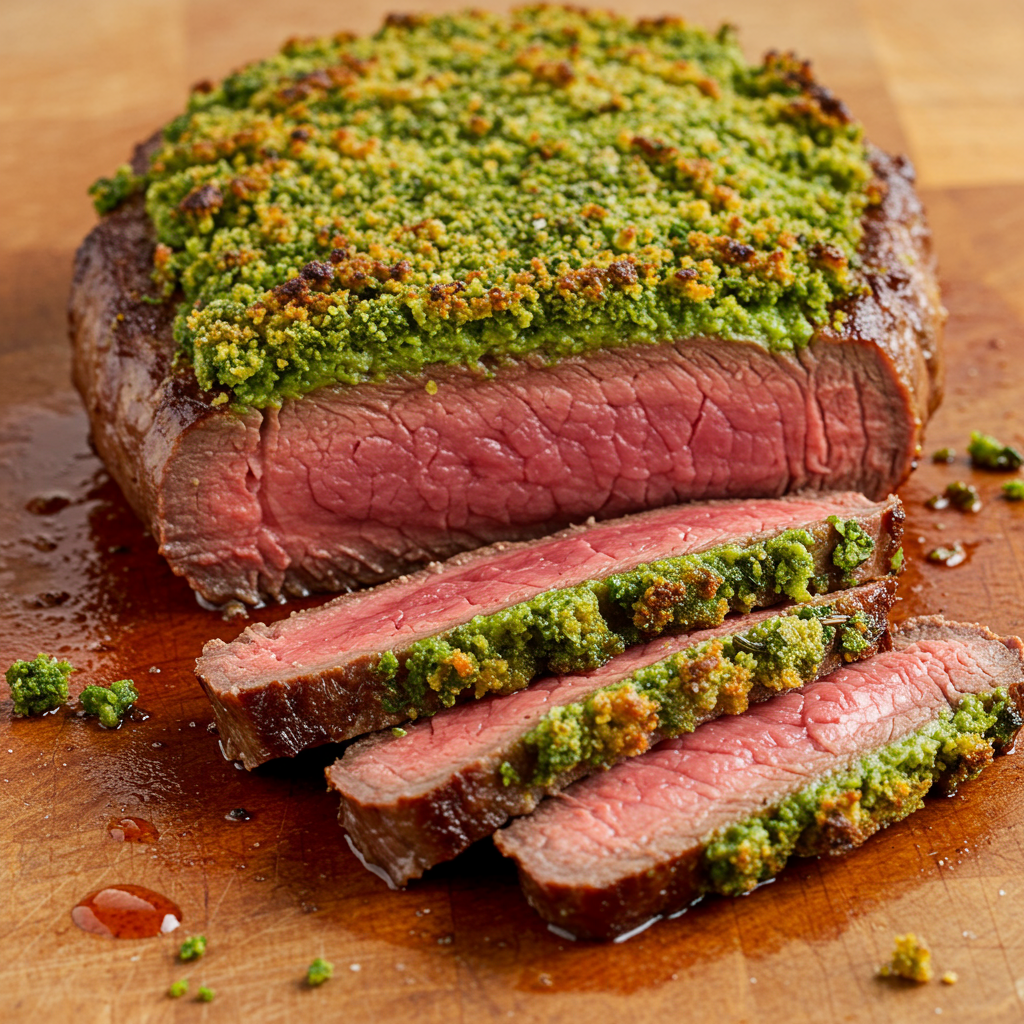
This recipe creates a flavorful herb crust that adds texture and aromatics to lean sirloin steaks.
Ingredients:
- 2 top sirloin steaks (1 inch thick)
- 1/4 cup fresh breadcrumbs
- 2 tablespoons fresh parsley, chopped
- 1 tablespoon fresh chives, chopped
- 1 teaspoon fresh thyme, chopped
- 2 cloves garlic, minced
- 3 tablespoons olive oil
- Salt and pepper to taste
Instructions:
- Mix breadcrumbs, herbs, garlic, and 2 tablespoons olive oil to create the crust mixture.
- Season steaks with salt and pepper.
- Heat remaining oil in an oven-safe skillet over medium-high heat.
- Sear steaks for 3-4 minutes per side.
- Press herb mixture onto the top of each steak.
- Bake at 450°F for 3-5 minutes until crust is golden.
- Rest before serving to maintain the crust’s texture.
7: Simple Salt and Pepper Perfection
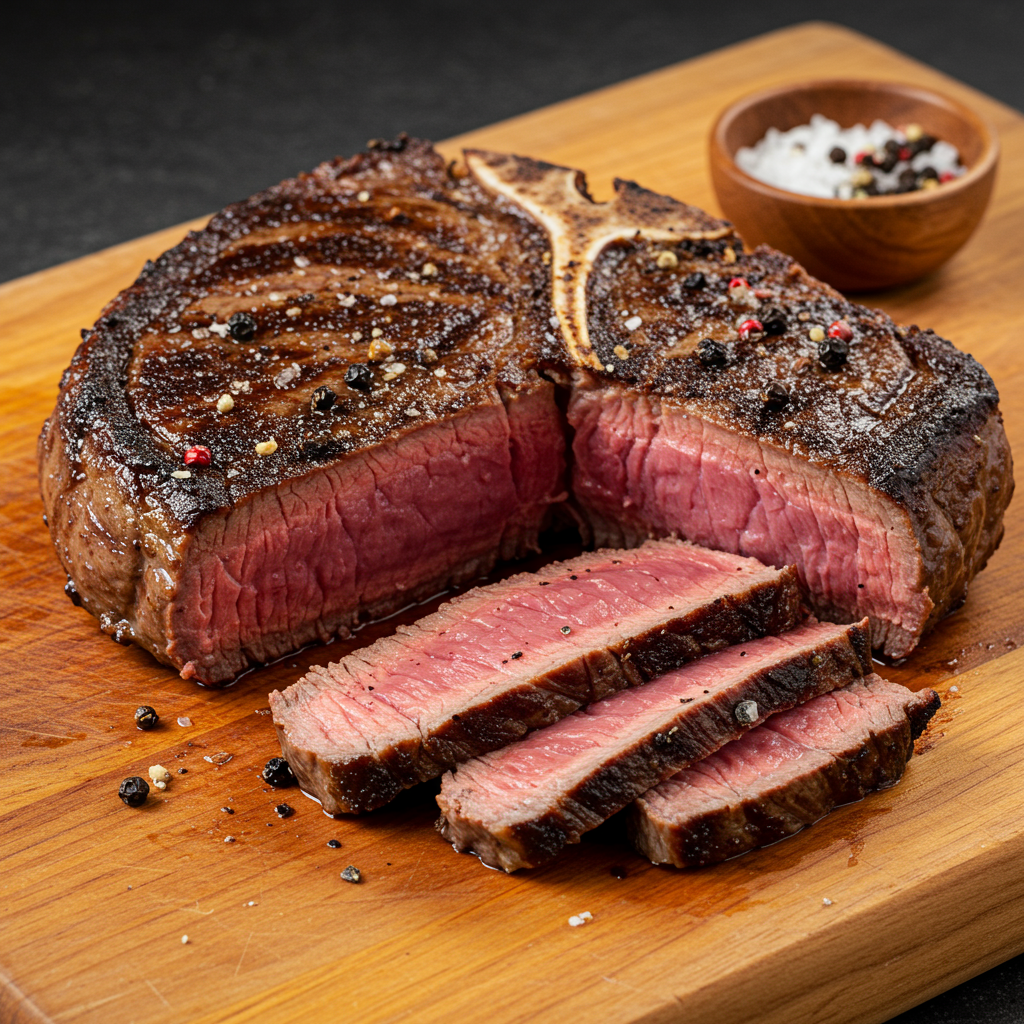
Sometimes the best approach is the simplest one. This recipe lets the quality of your beef shine through with minimal but effective seasoning.
Ingredients:
- 2 thick-cut steaks of your choice
- Coarse sea salt
- Freshly cracked black pepper
- 2 tablespoons neutral oil (vegetable or canola)
- 2 tablespoons butter
Instructions:
- Season steaks generously with salt and pepper at least 30 minutes before cooking.
- Heat oil in a cast iron skillet over medium-high heat until shimmering.
- Sear steaks for 3-4 minutes per side without moving them.
- Add butter and baste steaks as it melts and foams.
- Transfer to 400°F oven and cook to desired doneness.
- Rest and serve with the pan drippings.
Pro-Tip: Use a coarse salt like kosher or sea salt rather than table salt. The larger crystals create better texture and don’t dissolve as quickly.
Temperature Guide and Doneness Levels
Understanding internal temperatures is crucial for consistent results. Here’s what you need to know:
- Rare: 120-125°F (cool red center)
- Medium-Rare: 130-135°F (warm red center)
- Medium: 135-145°F (warm pink center)
- Medium-Well: 145-155°F (slightly pink center)
- Well-Done: 155°F+ (no pink)
Most steak enthusiasts prefer medium-rare because it provides the best balance of flavor, juiciness, and texture. The proteins haven’t tightened up too much, so you get maximum tenderness while still achieving food safety.
Troubleshooting Common Mistakes
Gray Band Around the Edges: This happens when you start with cold meat or use too low heat for searing. Always bring steaks to room temperature first.
Tough, Chewy Texture: Usually means overcooking. Invest in a good meat thermometer and trust it over visual cues.
Lack of Crust: Your pan wasn’t hot enough, or the steak was too wet. Make sure to pat dry and let the pan preheat properly.
Uneven Cooking: Thick steaks need the reverse sear method – start in a low oven, then finish with a high-heat sear.
Sides That Complete the Meal
While the steak is the star, the right sides can elevate your entire meal. Roasted vegetables like asparagus, Brussels sprouts, or carrots work beautifully and can cook alongside your steaks. Mashed potatoes or roasted fingerlings provide a satisfying starch base.
For something lighter, consider a simple salad with bitter greens to cut through the richness of the beef. The key is balance – you want sides that complement without competing.
Wine Pairing Alternatives
Since we’re avoiding alcohol-based ingredients, let’s talk about non-alcoholic beverages that pair beautifully with steak. Sparkling grape juice or a rich, dark cherry juice can provide some of the same flavor complexity as traditional wine pairings.
Coffee-based drinks work surprisingly well too, especially with the coffee-crusted recipe. The bitter notes complement the rich beef flavors without overwhelming them.
Storage and Reheating Tips
Leftover steak can be tricky to reheat without overcooking. The best method is to bring it to room temperature first, then warm it gently in a low oven (275°F) until just heated through.
For food safety, store cooked steak in the refrigerator for up to 3-4 days. Slice it thin and use it in salads, sandwiches, or stir-fries for delicious second-day meals.
Pro-Tip: Leftover steak makes incredible breakfast hash when diced and pan-fried with potatoes and onions.
Frequently Asked Questions
How do I know when my steak is done without cutting into it? The most reliable method is using a meat thermometer inserted into the thickest part of the steak. You can also use the hand test – press the center of the steak and compare the firmness to different parts of your palm, but this takes practice to master.
Can I cook frozen steaks in the oven? While possible, it’s not recommended. Frozen steaks won’t sear properly and will cook unevenly. Always thaw your steaks completely before cooking for the best results.
Why do I need to let the steak rest after cooking? Resting allows the muscle fibers to relax and the juices to redistribute throughout the meat. If you cut into a steak immediately after cooking, all those delicious juices will run out onto your plate instead of staying in the meat.
What’s the difference between grass-fed and grain-fed beef for these recipes? Grass-fed beef tends to be leaner and can cook faster than grain-fed beef. It may also have a slightly different flavor profile. Adjust your cooking times accordingly and watch the internal temperature carefully.
Can I use these methods for thicker steaks? For steaks thicker than 2 inches, consider the reverse sear method: start in a low oven (275°F) until the internal temperature reaches about 10°F below your target, then finish with a high-heat sear in a hot skillet.
Conclusion
Mastering oven steak recipes opens up a world of possibilities for home cooks. The key principles remain consistent across all cuts: proper seasoning, adequate resting time, correct temperatures, and patience during the cooking process. Each recipe we’ve covered offers a different flavor profile while maintaining the fundamental techniques that ensure success.
The beauty of cooking steaks in the oven lies in the control it gives you. Unlike grilling, where flare-ups and hot spots can cause uneven cooking, the oven provides consistent, even heat that helps you achieve restaurant-quality results every time. Remember that practice makes perfect, and each steak you cook will teach you something new about timing, temperature, and technique.
One final thought that often gets overlooked: the quality of your ingredients matters tremendously. Seek out well-marbled steaks from reputable sources, use fresh herbs when possible, and don’t skimp on the salt and pepper. These simple upgrades can transform a good steak into an exceptional one, making all your effort in the kitchen worthwhile.

